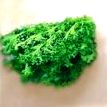Navigation article:
The number of occasions have you ever seen the term "Caturra" mounted on coffee brands around the globe? Amazingly, lots of people use the word without being conscious of the foundation from the word. I’ve done a little shopping around within the matter here is what I’ve discovered.

The name origin, meaning, definition:
Portuguese-Brazilian origin.
http://www.dicionarioinformal.com.br/caturra/
This can be a very worthwhile origin for any coffee varietal. Indeed, Caturra in Portuguese make reference to the Parrot bird species. In Spanish it might mean "Cotorra" or "Perico".Thus, probably, it describes domestic wild birds from the calopsita or Cockatiel species. In street language, this means a hard person, who loves to contradict and argue for free. In Spanish, a "Cotorra" may also mean somebody that is extremely talkative and noisy.
http://www.dicionarioinformal.com.br/caturra/
Characteristics:
Fundamental essentials primary agronomic characteristics from the Red and Yellow Caturra varietals:
1. It’s the of small size, of reduced length of internodes, leaves and side branches, supplying compact appearance towards the coffee shrub.
2. This is actually the first naturally happened coffee mutation found, with small size and yiel capacity
The Caturra cultivars were accountable for profound changes and improvement within the coffee industry worldwide.
3. They have superior quality within the cup simply because they have virtually 100% from the Bourbon coffee within their genes.
4. the conditions that they were grown in South america growing Caturra showed low hardiness and
consequent insufficient vigor following a couple of harvests, which brought towards the premature depletion in yield.

Cultivation recommendations:
These cultivars is not adequately studied in South america.
However, Out in the wild locations and fertile soils situated in other Latin American countries, they’re planted using, in certain cases, dense planting systems and shade.
In Colombia, Red Caturra represents about 70% from the occupied area with coffee, and in Costa Rica, greater than 80%.
In South america, in places of thin air and fertile soil, these cultivars are present in dense planting system. Another feature of the varietal is the excellent excellence of the cup, as it is one hundredPercent arabica Bourbon.

The coffee varietal origin:
This coffee varietal was created through the Alcides Carvalho Coffee Center ( Centro de Coffee shop ) from the IAC, Instituto Agronomico from the Sao Paulo Condition in South america.
This is a little good reputation for the Institute:
The Agronomy Institute (IAC), in Campinas:
The Agronomy Institute (IAC), in Campinas is really a research institute from the Agency Paulista Agribusiness Technology
from the Secretariat of Agriculture from the Condition of São Paulo, and it is headquartered in Campinas. It had been founded
in 1887 by Emperor D. Pedro II, and received the Agronomic Station of Campinas. In 1892 it visited
the administration from the São Paulo Condition Government.
Its performance ensures the meals supply towards the population and recycleables for industry, cooperating
to food security and also the competitiveness of merchandise in domestic and foreign markets. Its staff has
161 scientific researchers and 319 support. Its physical section of 1,279 hectares of land
hosts the headquarters, Central Experimental Center and 11 research centers distributed
among Campinas, Cordeirópolis, Jundiaí and Ribeirão Preto, with greenhouses, laboratories,
other sufficient infrastructure in the work.
http://www.iac.sp.gov.br/areasdepesquisa/coffee shop/centrocafe2.php
The extensive program of genetics and breeding of coffee that’s been developed in the Agronomic
Institute has produced a lot of cultivars which have been launched and suggested for
planting in a variety of parts of the condition of São Paulo and South america. It’s believed that 90% more
than 4 billion arabica coffee trees in South america originate from cultivars produced by IAC . And a few are
the foundation of coffee also using their company countries , although not be grown on the commercial
scale in South america. This is actually the situation of coffee Caturra Vermelho IAC 477 and IAC 476 Yellow caturra ,
which were selected within the IAC from 1937. Other coffee varieties originating
in the IAC , although presently they aren’t suggested , had outstanding importance
within the history the nation’s coffee production .
In 1937, IAC received Seed examples of genetic materials originated around the border from the states of Minas Gerais and Espírito Santo ( click the link to determine map ). It was from Red Caturra and yellow Caturra cultivars. Both of these cultivars originated by natural mutation of Bourbon Red, initially a tall coffee shrub, based in the Serra do Caparaó , that is now a mountainous Park north east from the town of Rio de Janeiro.

Seeds of those plants were introduced in IAC of Siqueira Campos, condition of Espirito Santo in 1937 , but it’s likely this natural mutation had happened a minimum of 22 years prior to being introduced within the IAC.
It had been selected and released by IAC in 1949, eventually reaching Colombia and Panama And Nicaragua , afterwards.
It’s important to highlight that it is origin is an all natural mutation from 100% Bourbon varietal thus explaining our prime quality within the cup. It’s of early beans harvest and is ideal for greater elevation regions above 1000m. This variety targets producing niche coffees because of its excellent organoleptic characteristics. It’s suggested for dense plantations and fertile soils.
Conclusion:
Caturra trees are an essential variety within the niche coffee industry. Coffee maqui berry farmers, coffee traders, baristas and occasional fanatics generally will be able to explain with precision what Caturra means, the geographic and genetic origin, and it is primary characteristics. The next time you like a Caturra coffee cup, appreciate the Caparao Mountain tops in South america and also the IAC scientists.
Verified Sources:
The Agronomy Institute (IAC), in Campinas, SP, South america:
http://www.iac.sp.gov.br/publicacoes/agronomico/pdf/v59_artigo1.pdf
http://www.iac.sp.gov.br/areasdepesquisa/coffee shop/centrocafe2.php

Resourse: https://donevelio.com/blogs/news/
